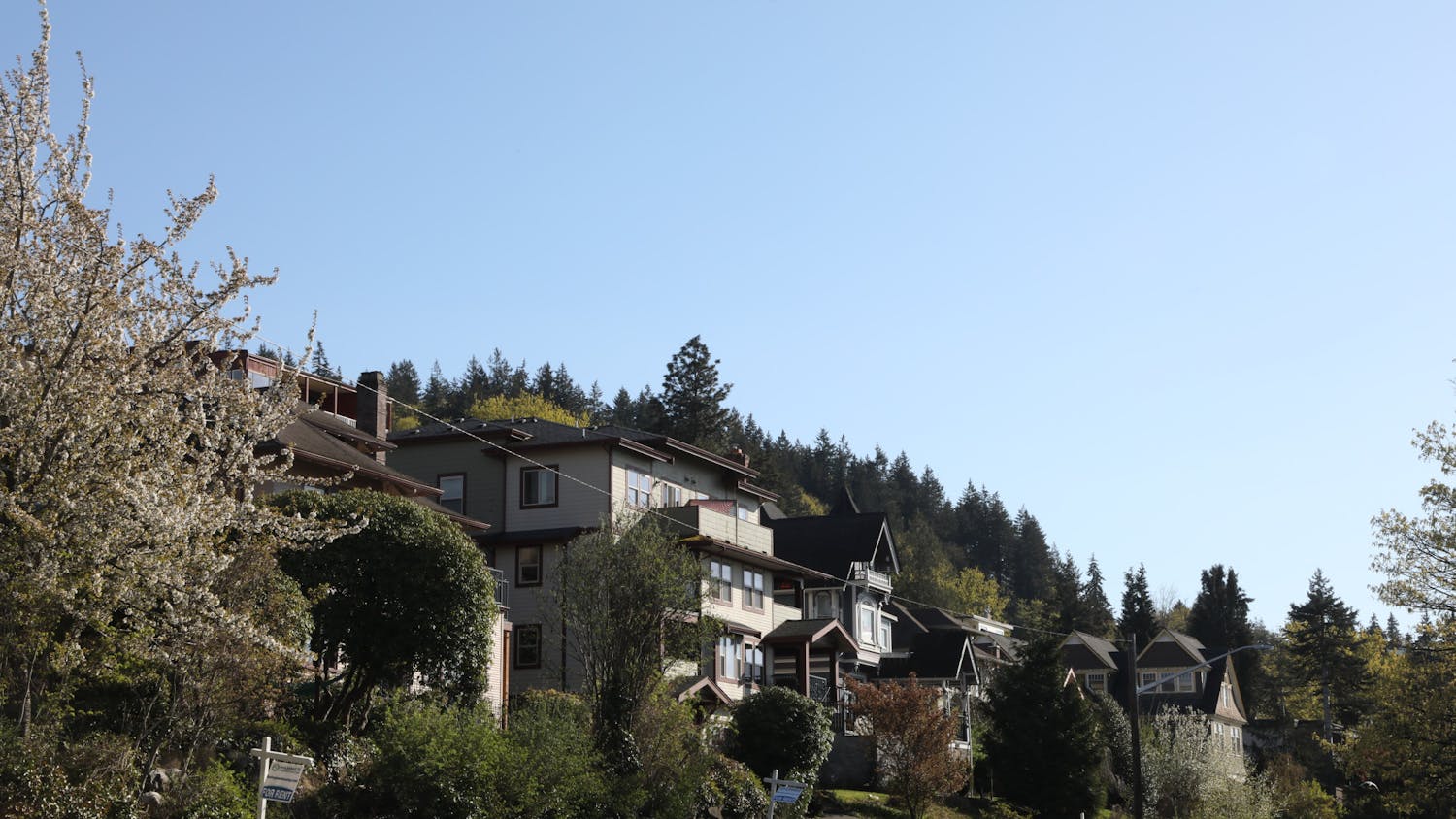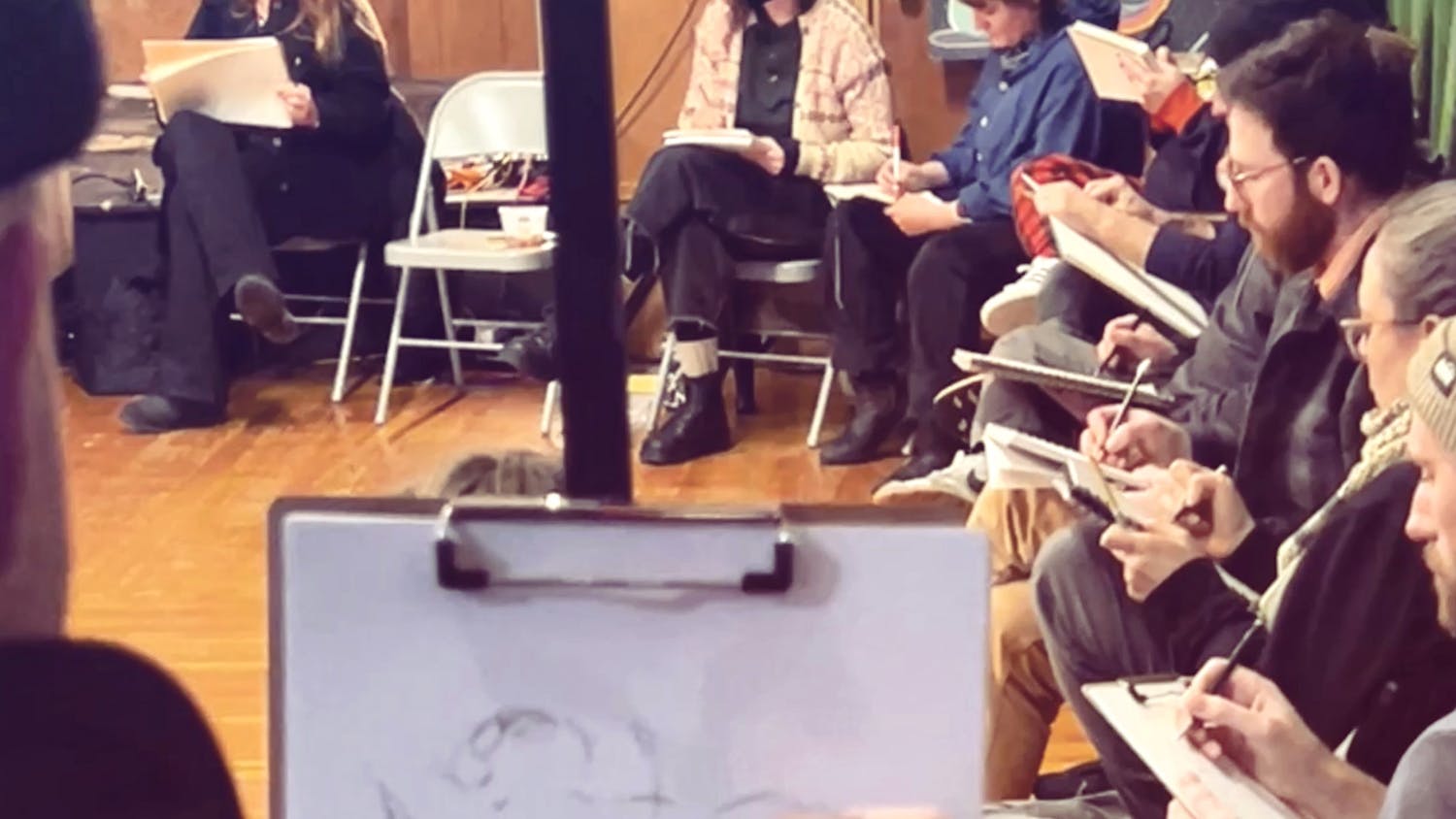A view overlooking Lake Whatcom. // Photo by Hailey Hoffman
By Ian Ferguson
In 2018, the Whatcom County Public Works Department detected a funding shortfall for the protection of the Lake Whatcom watershed. To make up that deficit, Whatcom County Public Works has proposed a fee for the residents within the watershed, with a median charge of $155.01 billed annually.
Gary Stoyka, natural resources program manager for the department, addressed members of the Lake Whatcom community on April 30 regarding the fee. The objective of the meeting was to inform the residents of the fee and offer any clarifying questions. No comments were recorded regarding grievances or support of the fee.
Stoyka said over the past year, the Lake Whatcom Stormwater Utility’s Advisory Committee has conducted a study with FCS Group, a firm that consults with public sector clients to determine utility fees.
With the study now finalized, the committee has made its recommendation for the utility fee.
The new stormwater utility fees will act as supplemental funding towards existing programs and the construction of new stormwater treatment facilities that are needed to meet that standard, Stoyka said.
Additionally, the funding will aid in a homeowners incentive program which — depending on certain circumstances — could partially or fully reimburse homeowners for the installation of treatment facilities.
[caption id="" align="alignleft" width="430"] A map of the Lake Whatcom Stormwater Utility Service Area. // Graphic courtesy of Whatcom County[/caption]
John Ghilarducci, president of the FCS Group, also spoke at the meeting to provide information about the findings of the year-long study.
In order to charge people justly, the fee is based on the amount of impervious surface area a property has, Ghilarducci said.
Small footprint houses, 2,500 square feet of impervious surface area or less, will be charged $116.26 annually; medium footprint houses, 2,500 to 8,400 square feet, will be charged $155.01; houses larger than 8,400 square feet will be charged $310.02.
Ghilarducci said the majority of residents will fall into the medium footprint range.
Stoyka said the fee will be charged to more than 5,000 homes that reside in the utility area — roughly ranging from the lake’s shores to the ridges of the surrounding hills
The committee's recommendation is based on a home’s “impervious footprint,” according to documents provided at the meeting. An impervious surface is one that does not absorb water, Stoyka said; driveways, patios and roofing are all considered impervious surfaces.
“There is a real strong nexus, or linkage, between the developed area and impervious surface area, and the problems that are caused by stormwater runoff,” Ghilarducci said.
Impervious surfaces, like driveways, do not adequately absorb rain and stormwater, resulting in stormwater runoff, Stoyka said in an interview. That runoff contains phosphorus — the chemical that the utility is fighting to remove.
An excess amount of phosphorus in freshwater leads to algae blooms, he said. When the algae die they consume oxygen leading to low oxygen levels — studies have shown this to be detrimental to fish and wildlife populations.
A 1998 study by the Washington State Department of Ecology found the water quality of Lake Whatcom did not meet water quality standards due to low dissolved oxygen levels and high fecal coliform bacteria.
Stoyka said Whatcom County was provided with a National Pollutant Discharge Elimination System permit, giving the county 50 years to bring Lake Whatcom’s dissolved oxygen levels back to the standard level.
Due to the expense it would take to measure each household’s exact amount of impervious surface area, the committee analyzed 300 plots of land in the watershed to set the standard, he said.
The committee found a general relationship between parcel size and amount of impervious surface area. In the case of outliers, which are large parcels with a small amount of impervious area, Stoyka said there will be a way for residents to file an appeal to receive a different fee.
So far, these fees are only a recommendation by the stormwater utility advisory committee. On June 18, they will present their finding to the Whatcom County Council at a public hearing, according to Stoyka.
If the council passes the committee’s recommendation, the fees will be phased in over two years, Ghilarducci said. Residents will only be charged half the fee on the first year and the full fee on the second.
The county council hearing will be open to public comment and consideration. Stoyka said the council could issue a ruling as early as the June 18 hearing.





